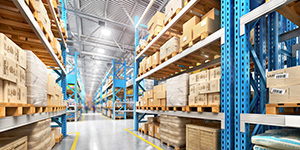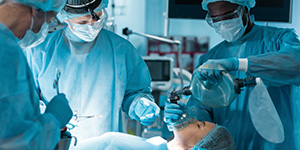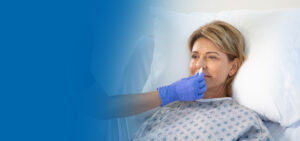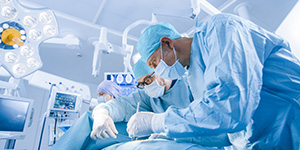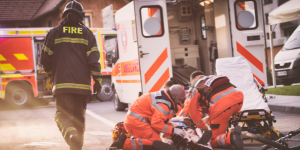Epistaxis—commonly known as nosebleed—typically isn’t a life-threatening condition, yet it leads to over 500,000 visits to emergency rooms (ERs) each year in the U.S. This adds up to about $350,000,000 in healthcare costs annually, though only 6% of ER visits for nosebleed required hospitalization.
The Trouble with Standard Nosebleed Treatment
Although standard nosebleeds usually aren’t medically serious, they can be surprisingly difficult to treat. Treatment for anterior epistaxis (standard nosebleed) involves applying firm, constant pressure to the soft side walls of the nose for 10-20 minutes while the patient’s head leans slightly forward.
This treatment method may sound simple, but it’s a time-consuming process that requires valuable hospital resources and tends to be uncomfortable for patients. Nosebleeds are most common among children ages 2 to 10, who may have trouble with the instructions and typically don’t respond well to invasive treatments. They’re also particularly common among people over age 70, who tend to be at higher risk for complications without fast and effective treatment.
Meet NasaClip, A Nosebleed Rescue Device
Based on years of experience as an ER physician, Dr. Elizabeth Clayborne knew there had to be a better way to treat standard nosebleeds. So, she created NasaClip, the first adjustable nosebleed rescue device that offers hands-free compression, along with co-founders Dr. Neal Sikka and Romil Patel.
NasaClip meets the need for quick, effective nosebleed treatment with minimal provider involvement in the ER and elsewhere. NasaClip combines external nasal pressure and soft intranasal sponges that can be medicated to provide comfortable, fast-acting, and mess-free nosebleed treatment.
This simple yet effective FDA-registered device is available in both pediatric and adult models, with adjustable sizing for the right fit every time. With NasaClip, healthcare providers and the patients they serve can treat nosebleeds with less stress and more comfort than ever before.
Quality Metrics at an Affordable Cost
NasaClip is not your average nasal tamponade device. Compared with similar devices, NasaClip offers double the benefits for a significantly reduced cost. Due to its simplicity and effectiveness, NasaClip has been shown to reduce patients’ length of stay, leading to improved patient and provider satisfaction scores.
NasaClip has also been shown to reduce elopement rates, since clinicians can give patients a take-home device to ensure they stay until properly discharged. The take-home device also reduces bounce back visits, allowing patients to manage any re-bleeding episodes on their own. For all these benefits, using two NasaClip devices per patient is still cheaper than using one nasal tamponade device!
The Future of Hands-Free Nosebleed Treatment
NasaClip gives hospitals and healthcare providers a clear pathway to treating nosebleeds without stretching valuable healthcare staff and resources. This kid-friendly, easy-to-use nosebleed device offers uninterrupted pressure that stops bleeding fast with hands-free compression.
NasaClip is simple to insert and adjust to fit everyone comfortably, with no MD or midlevel involvement needed. That means hospital staff can begin to address nosebleeds immediately after triage, without the need to free up an exam room or use additional equipment.
Once NasaClip has been inserted and adjusted appropriately, hospital staff are no longer needed for constant pressure application and oversight, allowing clinicians to focus on caring for more seriously ill patients while improving patient care and cutting costs. When patients require a higher level of treatment, NasaClip’s medical-grade intranasal sponges can be medicated to target the mucosa over Kiesselbach’s plexus. Since Kiesselbach’s plexus is the source of 90% of standard nosebleeds, this offers a direct means of treating more difficult cases.
The effectiveness of NasaClip extends beyond the ER, too. Approximately 60% of people will have at least 1 nosebleed in their lifetime, whether it leads to an ER visit or not. With NasaClip available at home, in the car, at work, or on the field, many of those nosebleeds can be stopped in their tracks without a doctor’s intervention.
NasaClip offers a simple solution that can take the pressure off of nosebleed treatment, whether it’s happening at home or in a healthcare setting. For more information about NasaClip or our other innovative solutions, contact a member of our team.



